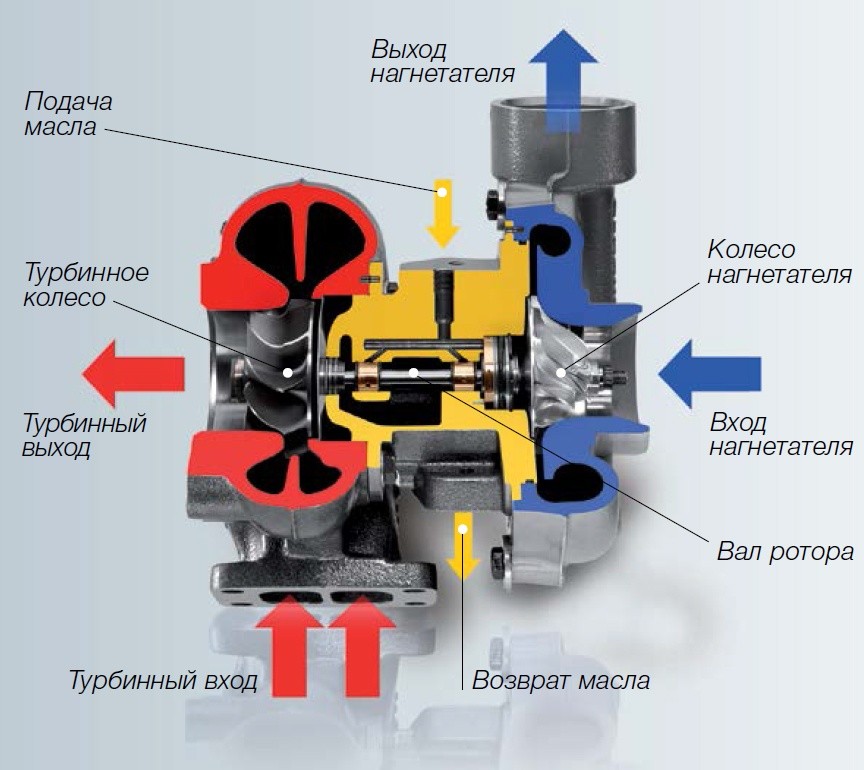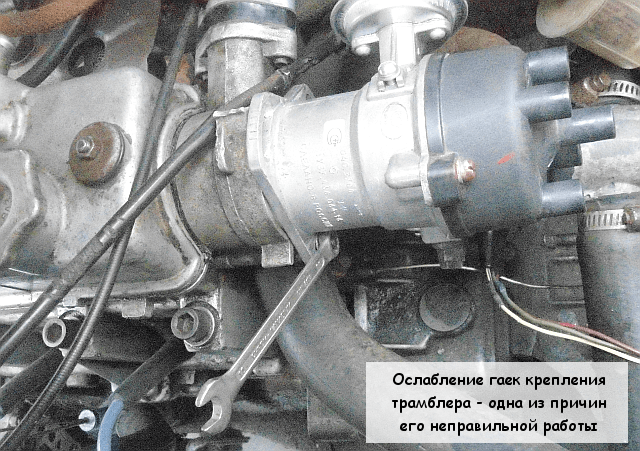
Что такое турбокомпрессор? Узнайте об условиях работы турбокомпрессора в двигателе внутреннего сгорания
Содержание
- Как устроена турбина?
- Работа турбокомпрессора в автомобиле внутреннего сгорания
- Турбокомпрессор — принцип работы и влияние на двигатель
- Турбокомпрессор — как работает холодная сторона?
- Как работает интеркулер и зачем он установлен?
- Как работает дизельный турбокомпрессор — отличается ли он?
- Новые автомобильные турбокомпрессоры и их комплектации в автомобилях
Само название говорит о том, что назначение турбины – сжатие. Воздух необходим для воспламенения топлива, поэтому турбокомпрессор влияет на тягу воздуха, поступающего в камеру сгорания. Во что выливается увеличение давления нагнетаемого воздуха? Благодаря этому можно сжечь большую дозу топлива, а значит, увеличить мощность двигателя. Но это не единственная функция, которую выполняет турбина. Узнайте больше об автомобильных турбокомпрессорах!
Как устроена турбина?
Если вы хотите понять, как работает турбина, вам нужно знать ее устройство. Он разделен на две части, называемые:
- холодно;
- горячий.
Горячая часть состоит из турбинного колеса, которое приводится в движение выхлопными газами, образующимися в результате сгорания топливно-воздушной смеси. Рабочее колесо размещено в корпусе, прикрепленном к выпускному коллектору двигателя. Холодная сторона также состоит из крыльчатки и корпуса, в который нагнетается воздух из воздушного фильтра. Оба ротора размещены на одном сердечнике компрессора.
Груша на холодной стороне также является важной частью. Штанга перекрывает выпускной клапан при достижении максимального наддува.
Работа турбокомпрессора в автомобиле внутреннего сгорания
Под действием импульса дымовых газов ротор на горячей стороне ускоряется. В то же время ротор, расположенный на другом конце сердечника, приводится в движение. Турбокомпрессор с неизменяемой геометрией полностью зависит от импульса выхлопных газов, поэтому чем выше обороты двигателя, тем быстрее вращаются роторы. В новых конструкциях сказывается подвижность движущихся лопастей турбины. Отношение давления наддува к оборотам двигателя уменьшается. Таким образом, наддув появляется уже в диапазоне низких оборотов.
Турбокомпрессор — принцип работы и влияние на двигатель
Что возможно благодаря тому, что сжатый воздух попадает в камеру сгорания? Как известно, чем больше воздуха, тем больше кислорода. Последнее само по себе не влияет на увеличение мощности агрегата, но дополнительно контроллер двигателя также выдает повышенную дозу топлива при каждой доливке. Без кислорода его нельзя было сжечь. Таким образом, турбокомпрессор увеличивает мощность и крутящий момент двигателя.
Турбокомпрессор — как работает холодная сторона?
Откуда взялось это имя? Подчеркну, что воздух, поступающий во впускной коллектор, холодный (или, по крайней мере, намного холоднее выхлопных газов). Изначально конструкторы устанавливали турбокомпрессоры только в двигатели, которые нагнетали воздух прямо из фильтра в камеру сгорания. Однако было замечено, что он греется и КПД устройства снижается. Поэтому пришлось установить систему охлаждения и интеркулер.
Как работает интеркулер и зачем он установлен?
Радиатор устроен так, что поток воздуха, проходящий через его ребра, охлаждает нагнетаемый внутрь воздух. Газомеханика доказывает, что плотность воздуха зависит от температуры. Чем она холоднее, тем больше в ней кислорода. Таким образом, в моторный отсек за один раз можно нагнетать больше воздуха, что необходимо для воспламенения. С завода интеркулер обычно монтировался в колесную арку или в нижнюю часть бампера. Однако было замечено, что он дает наилучшие результаты при размещении перед охладителем жидкости.
Как работает дизельный турбокомпрессор — отличается ли он?
Короче — нет. Как двигатели с воспламенением от сжатия, так и двигатели с искровым зажиганием производят выхлопные газы, поэтому турбокомпрессор в бензиновом, дизельном и газовом двигателе работает одинаково. Однако его управление может быть различным с использованием:
- перепускной клапан;
- контроль вакуума (например, клапан N75);
- переменное положение лопастей.
Диапазон вращения турбины в данном двигателе также может отличаться. В дизельных и небольших бензиновых агрегатах прибавку можно почувствовать уже с нижнего диапазона оборотов. Бензиновые автомобили старых типов часто достигали максимального наддува при 3000 оборотах двигателя.
Новые автомобильные турбокомпрессоры и их комплектации в автомобилях
До недавнего времени использование более одного турбонагнетателя в двигателе было зарезервировано только для высокопроизводительных двигателей. Сейчас в этом нет ничего странного, ведь еще до 2000 года в массовое пользование выпускались конструкции с двумя турбинами (например, Audi A6 C5 2.7 biturbo). Часто в более крупных установках сгорания размещают две турбины разного размера. Один из них приводит двигатель в движение на более низких оборотах, а другой обеспечивает наддув на более высоких оборотах до окончания действия ограничителя оборотов.
Турбокомпрессор — великое изобретение, и о нем стоит позаботиться. Он питается от моторного масла и требует надлежащего обслуживания. Это полезно не только при быстрой езде, разгоне или увеличении мощности в машине. Это очень практично. Вы можете снизить расход топлива (вам не нужно увеличивать мощность двигателя, чтобы получить больше мощности и эффективности), устранить дымность (особенно дизели) и увеличить мощность в ответственный момент (например, при обгоне).
